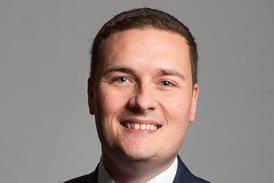Insider tales and must-read analysis on how integration is reshaping health and care systems, NHS providers, primary care, and commissioning. This week by deputy editor Dave West.
HSJ’s inboxes are currently heaving with frustration and fury on a rare consistency of theme; the build up of medically fit patients who can’t be discharged from hospitals.
Here’s one exampe from an exasperated, experienced manager, who spoke of “real failure in social care – long stays growing and no capacity to discharge to, a. Homes closed due to infection, b. Homes going out of business c. Homes unable to come and assess patients as no spare staff, d. No care packages as staff sick or none available due to lack of capacity e. social workers and others needed to make assessments in very short supply”.
They went on: “[The] biggest issue though is the complete disconnect between the frontline and the strategy at the centre. No staff and yet they go for Nightingale wards on hospital sites when we have 25 per cent of our bed capacity stuck not needing care but with nowhere to go. Why not create nursing home sites away from hospital?…
“We keep getting told we’ll cope and get through but we’re really not… The will to continue is beginning to break down with refusals to redeploy and high sickness absence on top of enforced absence due to covid. A seemingly mad commitment to grind through elective stuff…
“The achievement of staff in such challenging environments is not recognised anywhere, because the message on how challenging it is is not getting out there. I’m not a moany person - I’m usually all about the pragmatism and problem solving - but it is really, really bad and it feels like the NHS has been abandoned to just get on with it.”
Another angry hospital boss, in a different region, asked about the causes of the current discharges issues, citing a “mix of issues but they existed long before Omicron… over prescribing of social care, failure to review social care provision and move individuals off their package, inadequate remuneration for care staff so unable to recruit and retain, risk aversion resulting in care home closures, political prioritisation of care home risk over much greater risk in the community, such as people waiting for category 1 and 2 ambulances”.
The latest figures speak for themselves. Rather than a reduction over the last few weeks in long-staying patients, they show a leap up, and the same for the number reported with “no reason to reside” – that is those who, under NHS England’s definition (a disputed one, but that’s a story for another time), have no clinical need to stay.
NHSE is attempting to restrain itself from joining a social care/local government blame game, although one Skipton House missive last week tellingly admitted “there are huge challenges at the moment getting discharge into social care” and, privately, highlights that some 90 per cent of those stranded in hospital for over three weeks, and with no apparent clinical need, fail to get discharged.
The truth behind what’s happening is big underlying problems in care, long-unsolved riddles around discharge, mixed with the perils of ‘living with covid’ in the health and care system, and a reluctance in government to change rigid national infection control rules, for fear of the wave one disaster in care homes.
Preparing for Christmas
What was certainly not missing was a lack of attempts at the Department of Health and Social Care and NHS England to pull relevant levers in the weeks before Christmas, once omicron was looming. Whether that was too late to fix a deep-rooted problem is part of the picture.
In Victoria Street and Skipton House, guidance and letters, as well as money, are the language of priorities. And there was a copious amount issued about discharge in December. 12 December’s “level four letter” asked for “no reason to reside” patients to be cut in half.
The signal was given that the local NHS could spend the money it needed on discharge (though the financial shackles were not off in quite the same way as wave one); and a government taskforce chair was appointed in Sarah-Jane Marsh, to link with civil servants, councils and others.
Two further stern system letters followed on 22 December asking among other things for temporary bedded “care centres” to be opened in hotels and hospices, and for services to be ready to discharge seven-days-a-week over the bank holidays — notoriously bad days when hospitals often get gummed up. A further storm of guidance about implementing all this followed - there was no doubt about the threat posed to keeping the wheels on the health system.
Unfortunately, up against reality there is a limited amount that guidance and letters can do.
More discharges in a much more full system
Figures do suggest that in crude terms, more discharges of “no reason to reside” patients did take place in the weeks before, during and after Christmas, than in the same period previously. But it’s a percentages game, and they were a smaller proportion of much larger numbers of people now in hospital. Since the great clearout of spring 2020 hospitals have been gradually filling up again — with a blip down during last winter’s Alpha surge and lockdown.
There are now nearly as many acute patients in hospital as pre-covid, and that means plenty more new medically fit long-stayers in the wards coming up behind each discharge.
With hospitals already running very hot, the relatively marginal slip in discharges over Christmas resulted in a large leap in long-staying “stranded” patients and those with “no reason to reside”.
The great wave-one clearout was in the spring, not winter (let alone Christmas), had more time in the preparation before the wave hit most regions, and was accompanied by a huge drop in admissions, fuelled by fear and national lockdown. There was also a big shift in risk calculations by staff in and outside the NHS, anticipating the great unknown of being overwhelmed by the then-novel threat.
This time, instead, omicron rose so quickly that both NHS and care were dealing with huge absences even before Christmas, when they were trying to get ahead. In both the NHS and care sector, staffing gaps are a big barrier to discharge. Data shows that so-called “pathway 0” discharges, which do not require social care assessment or support, fell off over Christmas as well as those which do (NHSE guidance and policymakers are careful to note that, while social care for complex patients is the most-often cited problem, huge gains could be made from changing internal processes to discharge the more straightforward “pathway 0” discharges 12 or 24 hours earlier.)
Impossible to recover
Once the damage of the long bank holidays had been done, the omicron backdrop made the situation impossible to recover from.
Omicron outbreaks and absences were rapidly closing down numerous care facilities. Because it was a new variant of concern, despite the hope that it may be milder, government rules required that care homes hit by an outbreak must be closed for a full 28 days after their final case.
Some chief executives, and HSJ, raised the problem nationally in mid December if not before. But it was only last week that the government and UK Health Security Agency dropped the rule to 14 days, under pressure in the national media. This is where balancing risks - and the political terror of repeating the care disaster of wave one - come in. There was understandable caution about omicron spreading like wildfire through elderly care homes. Though there was hope it would be milder, there was little firm evidence of it.
Even after the 14 day adjustment, multiple areas are reporting that a majority of their care homes remain closed to admissions after an outbreak.
One local hospital director said at the time: “Local authorities are being pragmatic on closures and assessing each home - but even with that, all the new capacity we have put in in recent weeks is being lost with closures.”
One well placed source said they “can’t emphasise enough how the closure of so many care homes due to staff and resident outbreaks is impacting flow”. It had the effect of nearly doubling the average total delay for long-staying patients before discharge, they said.
Hospitals, too, have been “crippled” by the sheer infectivity of omicron and the infection control rules in place. It is harder to discharge those who are or have been infected, and even contacts are required to be isolated for 14 days - likely slowing their discharge, too (this rule is probably outdated, but is yet to be changed by the UKHSA).
Among all this there’s also been a big push to increase numbers in “virtual wards” — a good scheme generally welcomed, albeit with some concerns about staffing and pace — but it would be hard for a relatively new and complex scheme to move the dial on overall occupancy.
Backdrop
The background is at least as important as all the above. That is - as no readers will need telling - a long under-resourced care sector with major staffing problems and a broken funding system.
With the added pressures above, a flurry of rapid guidance and exhortations were never going to be enough to prevent discharges becoming a big issue. And many asked to spring into action over Christmas — especially in local government and social care — were hugely sceptical about being asked to turn things around at short notice. As one hospital chief told me in early December: “We’ve been trying to free up beds since [the summer]… Anyone who hasn’t been doing that non stop has been missing the point.”
In the short term, NHSE is pushing again on discharge progress this week, hospitals are really feeling the need to make headway, and the early signs this week in the data are they may now be having a bit more success.
There have also been countless national drives to try to solve delayed discharges, and don’t expect that to stop now. Sajid Javid has taken an interest - having set up the “taskforce” before Christmas - and officials expect a further drive later in the year, perhaps linked to the idea that shorter length-of-stay may free beds to accelerate elective recovery too.
The chances of making big inroads via national policy into such a wicked systems issue are slim, short of much more comprehensive care funding reform.
Any attempts need to have more clinical buy-in - some are very sceptical about the “reasons to reside” - and to somehow speak the different languages of the NHS, local government and care providers, as well as bridge the acute/community/primary NHS divides. There are areas and systems which from time to time have managed to make improvements - locally-led collaboration and service development is probably where there’s most chance of success.




























7 Readers' comments